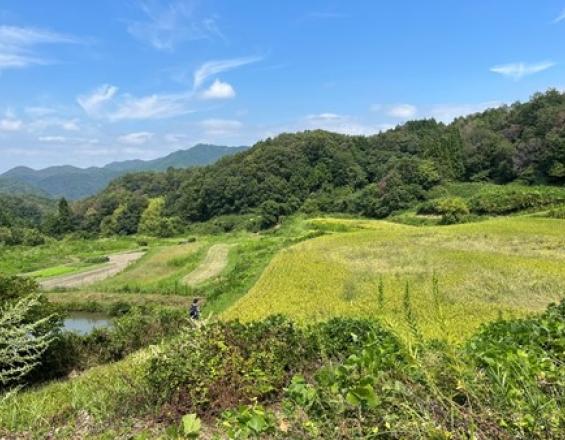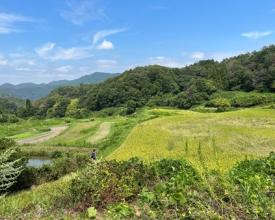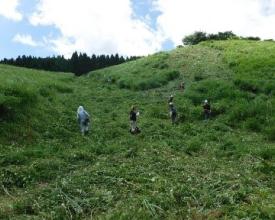
Première certification des OECM par le ministère japonais de l'environnement dans le cadre d'un système d'OECM clair, transparent et flexible, adapté à la nature et à la culture japonaises.

En octobre 2023, le ministère japonais de l'environnement (MOEJ) a certifié 122 sites comme les premiers "Nationally Certified Sustainably Managed Natural Sites" dans le cadre de son nouveau système de certification OECMs, qui a été développé en tenant compte de la nature et de la culture du Japon. Ces sites, à l'exclusion des sites qui sont déjà reconnus comme des zones protégées (par exemple, les parcs nationaux), seront reconnus comme OECMs au Japon. L'objectif principal de ce système est de reconnaître les sites où la biodiversité est conservée grâce à des initiatives d'entités privées. Le ministère de l'environnement et de l'aménagement du territoire a mis en place un système de certification expérimental en 2022 avec les membres de l'"alliance 30by30 pour la biodiversité", une plateforme multipartite lancée en avril 2022 dans le but de promouvoir efficacement les mesures prévues par la feuille de route 30by30 du Japon. Le nouveau système de certification des OECM a commencé à fonctionner pleinement en avril 2023, en acceptant les demandes de l'autorité de gestion des sites.
Contexte
Défis à relever
Le système de certification vient de commencer à fonctionner pleinement et le ministère de l'environnement et de la justice a l'intention de l'améliorer en coopération avec l'"Alliance 30by30 pour la biodiversité".
L'un des défis à relever est de veiller à ce que la biodiversité de la zone soit préservée en permanence, même après la certification. Afin de soutenir officiellement les efforts de conservation déployés dans les sites enregistrés en tant qu'OECM, le ministère de l'environnement et de la justice a également entamé le processus législatif relatif à ce système et entend soumettre un projet de loi à la Diète.
En outre, les OECM dans les zones côtières et marines sont toujours à l'étude, ce qui constituerait un autre défi pour le Japon.
Emplacement
Traiter
Résumé du processus
Après l'élaboration du système initial de certification des OECM au sein du comité d'experts, un système d'essai a été mis en place avec le soutien des membres de l'alliance 30by30 pour la biodiversité, qui se sont portés volontaires pour tester le système d'essai sur leurs terres.
Lors de l'élaboration d'un système de certification pour des systèmes complexes tels que les OECM, il est nécessaire de disposer à la fois d'un examen académique par des experts et d'avis sur le terrain.
Blocs de construction
Plate-forme multipartite pour soutenir le développement du système
"L'alliance 30by30 pour la biodiversité", plateforme multipartite lancée en avril 2022, a fortement soutenu le développement du nouveau système de certification des OECM, y compris le système de certification expérimental qui a été mené en 2022 avant le lancement effectif de l'opération complète.
Facteurs favorables
Collaboration avec différents secteurs et vision commune de la manière dont nous voulons réaliser l'initiative "30 pour 30" dans le pays
Leçon apprise
Partager des points de vue communs sur la manière dont nous voulons atteindre 30by30 dans le pays serait un facteur clé pour collaborer entre les secteurs. L'organisation d'une plateforme multipartite ou d'une communauté de "supporters" ayant pour objectif commun d'atteindre 30by30 au niveau national serait utile pour tester et finaliser le système de certification, en particulier si l'objet du système peut être régi ou géré par le secteur privé.
Le comité d'experts était composé d'experts en biodiversité
Les OECM pouvant se présenter sous différentes formes, un système tenant compte de la nature et de la culture du Japon était nécessaire pour refléter la réalité. Un comité d'experts a été mis en place en 2020 pour discuter de la manière dont un système correspondant à la nature et à la culture du Japon peut être développé. Après trois ans de réflexion, le nouveau système japonais de certification des OECM a été lancé.
Facteurs favorables
Se concentrer sur la nature et la culture du pays et appliquer les systèmes de l'OECM qui correspondent à ces conditions.
Leçon apprise
Les OECM peuvent se présenter sous différentes formes et il est important d'adapter le système au contexte national/local. Des conseils d'experts seraient utiles à cet effet.
Impacts
Les zones ciblées par le programme "Nationally Certified Sustainably Managed Natural Sites" (sites naturels certifiés au niveau national et gérés de manière durable) sont très variées. Outre la nature sauvage, par exemple, les SATOYAMA dans les zones rurales, les espaces verts urbains, les sanctuaires et les forêts de temples riches en biodiversité pourraient être des sites candidats. L'objectif de ce programme est de promouvoir la conservation de la biodiversité non seulement dans la nature vierge, mais aussi dans diverses zones, y compris la nature proche de la vie des gens. En outre, grâce à ce nouveau programme, les mesures de conservation prises par les acteurs privés en dehors des zones protégées peuvent être reconnues, ce qui encourage davantage d'acteurs à s'impliquer dans la promotion de la conservation de la biodiversité.
Cela nous permettra de promouvoir la conservation de la biodiversité dans tout le Japon, en réalisant une société dans laquelle les gens et la nature coexistent en harmonie, plutôt que de tracer des lignes entre eux.
Bénéficiaires
Le ministère vise à encourager ces efforts afin de créer une société vivant en harmonie avec la nature, de manière à ce que nous puissions bénéficier en permanence des diverses bénédictions de la nature.



